
Bobonaro: The Heart of Timor-Leste's Cultural and Natural Beauty
Discover Bobonaro: The cultural heart of Timor-Leste, where lush landscapes, historic sites, and warm hospitality create an unforgettable travel experience.
Nestled in the western highlands of Timor-Leste, Bobonaro is a hidden gem waiting to be explored. This enchanting city is known for its stunning landscapes, rich cultural heritage, and warm, welcoming locals. As you wander through its lush green hills and valleys, you'll encounter traditional villages that offer a glimpse into the life and customs of the Timorese people. The city is also home to natural hot springs, perfect for relaxing after a day of exploration. Bobonaro is a place where history and nature intertwine seamlessly. The city's colonial past is evident in its architecture and historic sites, such as the ancient forts that stand as a testament to its strategic importance. For those interested in the great outdoors, the surrounding mountains and forests provide ample opportunities for hiking and birdwatching. The Timor-Leste sky is a canvas of stars at night, making it an ideal destination for stargazing. No visit to Bobonaro would be complete without sampling the local cuisine. The food here is a delightful blend of Portuguese and Timorese flavors, with fresh seafood and tropical fruits taking center stage. The local markets are bustling with activity and offer a chance to taste these delicious dishes while mingling with the friendly locals. Whether you're an adventurer, a history buff, or simply looking to unwind, Bobonaro has something to offer everyone.
Local tips in Bobonaro
- Visit the hot springs at Marobo for a relaxing dip in natural, warm waters.
- Explore the traditional villages to learn about the local customs and traditions.
- Bring sturdy hiking boots for exploring the mountainous terrain and lush forests.
- Check out the local markets for fresh seafood and tropical fruits.
- Carry some local currency (U.S. dollars are widely used) as credit card facilities might be limited.
- Learn a few basic phrases in Tetum or Portuguese to enhance your interaction with the locals.
- Plan your visit during the dry season (May to November) for the best weather conditions.
Bobonaro: The Heart of Timor-Leste's Cultural and Natural Beauty
Nestled in the western highlands of Timor-Leste, Bobonaro is a hidden gem waiting to be explored. This enchanting city is known for its stunning landscapes, rich cultural heritage, and warm, welcoming locals. As you wander through its lush green hills and valleys, you'll encounter traditional villages that offer a glimpse into the life and customs of the Timorese people. The city is also home to natural hot springs, perfect for relaxing after a day of exploration. Bobonaro is a place where history and nature intertwine seamlessly. The city's colonial past is evident in its architecture and historic sites, such as the ancient forts that stand as a testament to its strategic importance. For those interested in the great outdoors, the surrounding mountains and forests provide ample opportunities for hiking and birdwatching. The Timor-Leste sky is a canvas of stars at night, making it an ideal destination for stargazing. No visit to Bobonaro would be complete without sampling the local cuisine. The food here is a delightful blend of Portuguese and Timorese flavors, with fresh seafood and tropical fruits taking center stage. The local markets are bustling with activity and offer a chance to taste these delicious dishes while mingling with the friendly locals. Whether you're an adventurer, a history buff, or simply looking to unwind, Bobonaro has something to offer everyone.
When is the best time to go to Bobonaro?
Iconic landmarks you can’t miss
Patung Bunda Maria Pelindung Segala Bangsa
Discover the serene beauty and cultural significance of Patung Bunda Maria Pelindung Segala Bangsa, a historical landmark that captivates visitors in Belu, Indonesia.

Largo de Lecidere
Experience tranquility and culture at Largo de Lecidere, a beautiful park in Dili, Timor-Leste, perfect for relaxation and local exploration.

Farol
Experience the tranquil beauty of Farol Beach in Dili, a perfect blend of relaxation and adventure in the heart of Timor-Leste.

Dolok Oan (Cristo Rei Back Beach)
Explore the breathtaking beauty of Dolok Oan, Cristo Rei Back Beach in Dili, a serene oasis for relaxation and stunning ocean views.

Statue of Youth
Explore the Statue of Youth in Dili, a monumental sculpture that embodies hope and resilience in the heart of Timor-Leste.

Marobo Hot Spring
Discover the serene Marobo Hot Spring in Bobonaro – a natural oasis of relaxation and healing amidst lush landscapes.
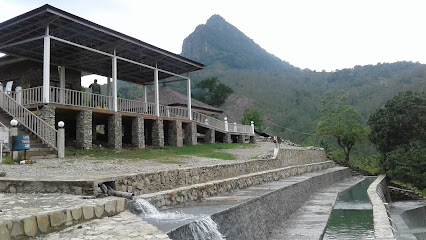
Xanana Gusmão Reading Room
Experience the Xanana Gusmão Reading Room in Dili, a quiet retreat filled with literature, history, and cultural events, perfect for every book lover.

Monumento Cristo Rei
Discover the breathtaking views and spiritual significance of Monumento Cristo Rei, a must-visit landmark in Dili, Timor-Leste.

Balibo Trails
Explore Balibo Trails: A Scenic Adventure in Timor-Leste's Rich Natural and Cultural Landscape.

Balibo Veterans' Museum
Discover the rich history of Timor-Leste at the Balibo Veterans' Museum, a poignant tribute to resilience and the quest for freedom.

Bobonaro, Kuda Ulun
Explore the vibrant community and rich culture of Bobonaro, Kuda Ulun, a hidden gem in Timor-Leste's stunning landscapes.
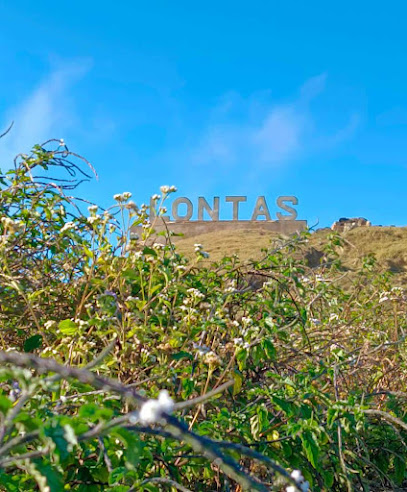
Foho Bina ó
Explore the stunning Foho Bina ó in Uato Carabar, a captivating blend of natural beauty and rich cultural experiences in East Timor.

Foho Bobonarolan
Discover the breathtaking views and rich biodiversity of Foho Bobonarolan, a stunning mountain peak in East Timor perfect for adventurers and nature lovers.

Muzeu Memorial Munisipal Bobonaro
Explore the cultural heritage of Timor-Leste at Muzeu Memorial Munisipal Bobonaro, a museum celebrating local history and community spirit.

Statua Presidente Nicolau Lobato
Explore Dili's iconic Statua Presidente Nicolau Lobato, a symbol of resilience and independence in Timor-Leste's rich history.
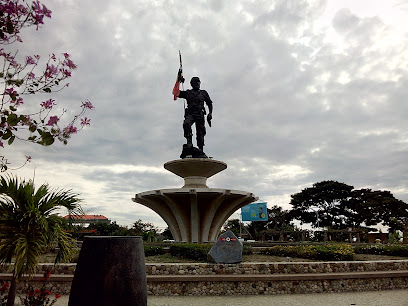
Unmissable attractions to see
Balibo Fort Hotel
Discover the rich history and breathtaking beauty at Balibo Fort Hotel, where culture meets comfort in Timor-Leste's stunning Balibo District.

Tais Market
Experience the heart of Timorese culture at Tais Market, Dili's vibrant hub for local crafts, fresh produce, and authentic street food.

Dolok Oan (Cristo Rei Back Beach)
Discover the serene beauty of Dolok Oan, a hidden gem in Dili, Timor-Leste, perfect for relaxation, exploration, and unforgettable sunsets.
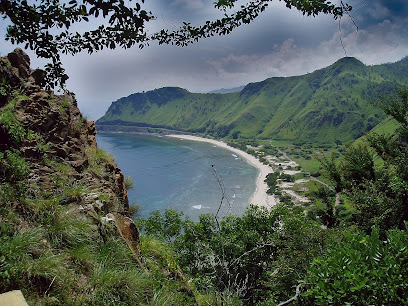
Tasitolu
Discover the serene beauty of Tasitolu, a tranquil nature preserve in Tibar, Timor-Leste, perfect for nature lovers and adventure seekers alike.
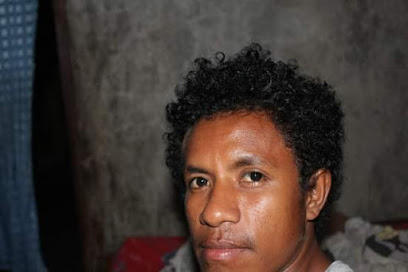
Muzeu Memorial Munisipal Bobonaro
Discover the rich history and culture of East Timor at Muzeu Memorial Munisipal Bobonaro in Maliana, a must-visit for every traveler.

Essential places to dine
Ocean View Restaurant
Experience breathtaking ocean views and delightful Timorese flavors at Ocean View Restaurant in Dili.

Restaurante Padang Bobonaro II
Experience authentic Indonesian cuisine at Restaurante Padang Bobonaro II in Dili – a culinary journey filled with flavor and warmth.

NATO'ON BUIKARI RESTAURANT
Discover the rich flavors of East Timor at NATO'ON BUIKARI RESTAURANT in Aidabalaten - where every dish tells a story.

Mini Restorante Rusgua (ENIN)
Discover authentic Timorese flavors at Mini Restorante Rusgua in Ainaro - a culinary gem for every traveler.

BARAKA AMIZADE
Discover authentic Timorese flavors at Baraka Amizade in Suai – where every meal is a celebration of culture and taste.

Restaurante Maliana
Discover authentic Timorese cuisine at Restaurante Maliana—where every dish tells a story of tradition and flavor.

Mr. Keko Restaurant
Experience authentic Indonesian cuisine at Mr. Keko Restaurant in Dili - where every dish tells a story.
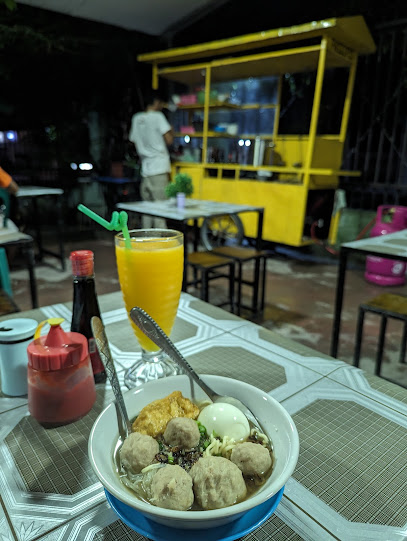
kayuan restaurant
Discover authentic Chinese cuisine at Kayuan Restaurant in Beremana - where every dish tells a story of tradition and flavor.

Samuana Restaurant
Experience the essence of Timorese cuisine at Samuana Restaurant in Dili, where fresh flavors meet breathtaking views.

Restaurante Laduena Maliana
Experience authentic Timorese cuisine at Restaurante Laduena Maliana—where every dish tells a story of culture and flavor.

Restaurante Nape
Experience authentic Timorese cuisine at Restaurante Nape in Suai – where every dish tells a story of tradition and flavor.

Warung Hanung Yuli
Experience authentic East Timorese cuisine at Warung Hanung Yuli in Maliana—where every dish tells a story.

Naina Resto
Experience the rich flavors of Timor-Leste at Naina Resto in Maliana, where authentic cuisine meets warm hospitality.

Vong Restorante
Discover the flavors of Suai at Vong Restorante – where family-friendly dining meets authentic local cuisine.

Rest. Kartini
Experience authentic Timorese cuisine at Rest. Kartini in Suai – where every dish tells a story.

Markets, malls and hidden boutiques
maliana ritabou baero45
Discover the vibrant shopping scene at Ritabou Baero45 in Maliana, where local culture meets modern retail in a delightful atmosphere.

aldo nirvana
Explore the vibrant styles at Aldo Nirvana, Maliana's premier clothing store offering trendy fashion and local styles for every occasion.

Loza Online Dili
Explore the vibrant offerings of Loza Online Dili, a unique clothing and electronics store in Becora, Timor-Leste, perfect for souvenir shopping.

Anzor STAR
Discover the flavors of Timor-Leste at Anzor STAR, a delightful grocery store in Vila, offering fresh produce and local delicacies.

Seara market
Discover the vibrant Seara Market in Maliana, a cultural gem filled with local crafts, fresh produce, and the rich traditions of Timor-Leste.

Loja Risky Makmur
Explore Loja Risky Makmur in Maliana for unique home goods that celebrate Timorese craftsmanship and culture, perfect for souvenirs.

Odomau,Raimaten
Discover unique clothing styles at Odomau in Raimaten, Maliana, blending tradition and modernity for every fashion enthusiast.

Loja Nuky
Explore Loja Nuky, a vibrant shopping mall in Maliana, Timor-Leste, showcasing local crafts, delicious food, and a lively atmosphere.

Loja Makmur Team
Explore Loja Makmur Team in Maliana for unique home goods that showcase local craftsmanship and enhance your living space.

Kios Beat Memo
Experience authentic Timorese flavors at Kios Beat Memo, a charming kiosk in Maliana, perfect for quick snacks and refreshing beverages.
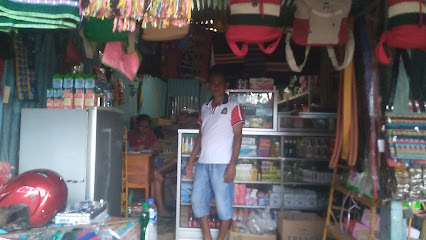
AJEGY
Experience the vibrant culture and delicious local cuisine at AJEGY Kiosk in Maliana, Timor-Leste.

HAU TIMOR
Discover authentic Timorese handicrafts at HAU TIMOR, a must-visit souvenir store in Dili offering unique treasures and cultural insights.

Kios Ardiano
Explore Kios Ardiano in Maliana for authentic local crafts and delicious East Timorese snacks, a true representation of the region's culture.

Kios Aibalu
Discover the flavors of Timor-Leste at Kios Aibalu, a charming kiosk offering local snacks and refreshing drinks in a vibrant atmosphere.
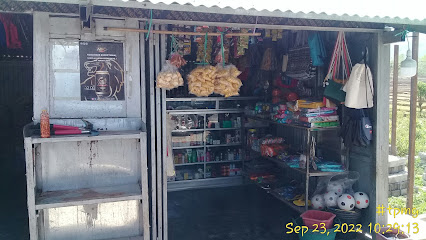
Aifunan Laran
Discover Timor-Leste's vibrant culture at Aifunan Laran, a charming home goods store in Ainaro offering unique handcrafted treasures.

Essential bars & hidden hideouts
Spooners Bar and Grill
Experience the vibrant culinary scene at Spooners Bar and Grill in Dili, where fresh seafood and local flavors come together in a charming coastal atmosphere.

Black Box Cafe and Bar
Discover the vibrant atmosphere of Black Box Cafe and Bar in Dili, where refreshing drinks and local culture come together for an unforgettable experience.

Funan Buras Motel (Guest House)
Experience the warmth of Timorese hospitality at Funan Buras Motel, your cozy retreat in the heart of Bobonaro, Timor-Leste.

Tower Cafe & Bar
Experience exquisite flavors and breathtaking views at Tower Cafe & Bar, a must-visit destination in Dili, Timor-Leste.

Ponkys Cocktail Lounge
Experience the vibrant nightlife of Dili at Ponkys Cocktail Lounge, where expertly crafted cocktails meet a lively atmosphere in a welcoming setting.

Incanto Coffee & Bar
Experience the perfect blend of local culture and relaxation at Incanto Coffee & Bar in Nain Feto Subdistrict, offering delightful beverages in a cozy atmosphere.

Ponkys Bar & Cafe
Discover Ponkys Bar & Cafe on Atauro Island, where relaxation meets vibrant island culture, offering delicious drinks and stunning ocean views.

Lopez nirvana
Experience the vibrant nightlife of Díli at Lopez Nirvana, where local culture meets a relaxed bar atmosphere.

Liquor Saksaur
Experience the lively ambiance and local flavors at Liquor Saksaur, Ainaro's go-to bar for an unforgettable night out.

Sonio Bistro
Experience the delightful fusion of local flavors and vibrant atmosphere at Sonio Bistro, the ultimate bar destination for travelers.

Comoro
Discover the vibrant nightlife at Comoro, Dili's premier bar, where local culture meets a lively atmosphere and refreshing drinks.

BKP Samara
Experience the vibrant atmosphere of BKP Samara, a pub in Aidabalaten where locals and travelers unite over drinks and good times.

Mahoni laran
Experience the lively atmosphere and local culture at Mahoni Laran, a top bar in Suai known for its refreshing drinks and welcoming vibe.

Mozy Hop
Experience the vibrant nightlife at Mozy Hop in Gleno, offering refreshing drinks and a taste of local culture in a welcoming atmosphere.

Deolindo
Discover Deolindo, a vibrant bar in Batugade, offering a taste of local culture and a perfect spot to unwind after exploring Timor-Leste.

Local Phrases
-
- HelloBondia
[bon-dee-ya] - GoodbyeAdeus
[ah-deh-oos] - YesSim
[seem] - NoLae
[lie] - Please/You're welcomePor favor
[por fah-vor] - Thank youObrigadu
[oh-bree-gah-doo] - Excuse me/SorryDeskulpa
[des-kool-pa] - How are you?Diak ka lae?
[dyak ka lie] - Fine. And you?Diak. No ita?
[dyak. no ee-tah] - Do you speak English?Ita koñese Ingles?
[ee-tah kohn-yes Ing-les] - I don't understandLa kompriende
[lah kom-pree-en-deh]
- HelloBondia
-
- I'd like to see the menu, pleaseHau hakarak hare menu, favor
[hau hah-kahk hah-reh menu, fah-vor] - I don't eat meatHau lai halai katuas
[hau lie hah-lie kah-too-ahs] - Cheers!Saude!
[sow-deh] - I would like to pay, pleaseHau hakarak selu, favor
[hau hah-kahk seh-loo, fah-vor]
- I'd like to see the menu, pleaseHau hakarak hare menu, favor
-
- Help!Ajuda!
[ah-joo-dah] - Go away!Ba oin!
[bah oh-een] - Call the Police!Liga polisia!
[lee-gah poh-lee-see-ah] - Call a doctor!Liga doutor!
[lee-gah doo-tohr] - I'm lostHau mate
[hau mah-teh] - I'm illHau moras
[hau moh-rahs]
- Help!Ajuda!
-
- I'd like to buy...Hau hakarak sosa...
[hau hah-kahk so-sah] - I'm just lookingHau deit hola
[hau dayt hoh-la] - How much is it?Kuantu ita nia?
[kwahn-too ee-tah nee-ah] - That's too expensiveNe'e barak karu
[neh-eh bah-rak kah-roo] - Can you lower the price?Ita bele koalia prese?
[ee-tah beh-leh koh-ah-lee-ah preh-seh]
- I'd like to buy...Hau hakarak sosa...
-
- What time is it?Tuku kotuk?
[too-koo ko-took] - It's one o'clockHanesan tuku ida
[hah-neh-sahn too-koo ee-dah] - Half past (10)Tuku seluk nia (10)
[too-koo seh-look nee-ah (dee-sa)] - MorningManha
[mahn-yah] - AfternoonTarde
[tahr-deh] - EveningKalan
[kah-lahn] - YesterdayHoriseik
[hoh-ree-sake] - TodayOhin
[oh-een] - TomorrowAban
[ah-bahn] - 1Ida
[ee-dah] - 2Rua
[roo-ah] - 3Tolu
[toh-loo] - 4Haat
[hah-at] - 5Lima
[lee-mah] - 6Neen
[neh-ehn] - 7Hitu
[hee-too] - 8Ualu
[wah-loo] - 9Sia
[see-ah] - 10Sanulu
[sah-noo-loo]
- What time is it?Tuku kotuk?
-
- Where's a/the...?Iha nebe...?
[ee-hah neh-beh] - What's the address?Enderecu saida?
[en-deh-reh-soo sah-ee-dah] - Can you show me (on the map)?Bele hatama iha map?
[beh-leh hah-tah-mah ee-hah map] - When's the next (bus)?Kanek ona (autobus)?
[kah-nek oh-nah (ow-toh-boos)] - A ticket (to ....)Bilhete (ba ....)
[beel-yeh-teh (bah)]
- Where's a/the...?Iha nebe...?
History of Bobonaro
-
Bobonaro, located in the western part of Timor-Leste, has a rich history that dates back centuries. The region was historically inhabited by the Bunak and Kemak ethnic groups, who established small, independent kingdoms. These early inhabitants engaged in subsistence farming, hunting, and traditional weaving, laying the foundation for the area’s cultural heritage.
-
In the 16th century, Portuguese explorers arrived in Timor-Leste, marking the beginning of over 400 years of colonial rule. Bobonaro became an important administrative and military post. The Portuguese influence remains evident in the architecture, language, and religion of the region. Churches and colonial buildings constructed during this period still stand as testaments to this era.
-
During World War II, Bobonaro was a significant site of conflict. In 1942, Japanese forces invaded Timor-Leste, leading to a fierce battle in the region. The local population, alongside Australian and Dutch forces, engaged in guerrilla warfare against the Japanese occupation. This period is remembered for its acts of bravery and resistance.
-
Following Timor-Leste’s brief declaration of independence in 1975, Indonesia invaded and occupied the country. Bobonaro, like many other regions, experienced significant turmoil and hardship during this period. The local population faced violence, displacement, and human rights abuses. The scars of this occupation are still visible in the memories and stories of the people.
-
The late 20th century saw a fervent struggle for independence in Timor-Leste. Bobonaro played a crucial role in the resistance movement. The region became a stronghold for the FALINTIL (Armed Forces for the National Liberation of East Timor), who fought tirelessly against Indonesian forces. The 1999 referendum, which led to Timor-Leste’s independence, was a pivotal moment in the region's history.
-
Bobonaro is a vibrant mosaic of cultural traditions. The local Bunak and Kemak communities continue to practice age-old customs, including traditional dance, music, and ceremonial rituals. The region is renowned for its tais weaving, a unique form of textile art that reflects the intricate patterns and vibrant colors of Timorese culture. Festivals and communal gatherings are integral to the social fabric of Bobonaro, offering visitors a glimpse into the enduring cultural heritage of the area.
-
Since gaining independence in 2002, Bobonaro has been on a path of reconstruction and development. Efforts have been made to rebuild infrastructure, improve education, and enhance healthcare services. The region is gradually opening up to tourism, with initiatives aimed at preserving its natural beauty and cultural heritage while promoting sustainable development.
Bobonaro Essentials
-
Bobonaro is located in the western part of Timor-Leste. The nearest international airport is Presidente Nicolau Lobato International Airport in Dili, which is about 120 kilometers away. From Dili, you can take a bus or hire a private car to reach Bobonaro. The journey by road typically takes around 3 to 4 hours, depending on road conditions.
-
Within Bobonaro, transportation options include local buses, minibuses, and taxis. Renting a car is also a viable option if you prefer to explore at your own pace. Be aware that road conditions can vary, so a vehicle with good ground clearance is recommended. For shorter distances, walking is a pleasant way to experience the local scenery.
-
The official currency in Timor-Leste is the US Dollar (USD). While credit cards are accepted in some hotels and larger establishments, it is advisable to carry cash, especially in smaller towns like Bobonaro. ATMs are available, but it is best to withdraw sufficient cash in Dili before heading to Bobonaro.
-
Bobonaro is generally safe for tourists, but standard precautions should always be taken. Avoid walking alone at night in unfamiliar areas and keep an eye on your belongings in crowded places. While Bobonaro does not have specific high-crime areas targeting tourists, it is always best to stay vigilant and aware of your surroundings.
-
In case of emergency, dial 112 for immediate assistance. Bobonaro has local police stations and medical facilities available. It is recommended to have travel insurance that covers medical emergencies. For minor health issues, there are pharmacies in the town where you can purchase over-the-counter medications.
-
Fashion: Do dress modestly, particularly when visiting religious sites. Avoid wearing revealing clothing. Religion: Do respect local customs and traditions. Always remove your shoes and cover your head when entering religious sites. Public Transport: Do be respectful and give up your seat to elderly passengers. Don't eat or drink on public transport. Greetings: Do greet people with a handshake and a smile. A slight bow of the head is also a sign of respect. Eating & Drinking: Do try local delicacies and accept food offerings graciously. Don't refuse hospitality, as it is considered impolite.
-
To experience Bobonaro like a local, visit the weekly markets where you can buy fresh produce and traditional Timorese goods. Engage with locals, as they are often friendly and willing to share stories about the area's history and culture. Don't miss visiting the local hot springs and the beautiful landscapes of Mount Leolaco. For a unique experience, participate in local festivals and ceremonies to gain a deeper understanding of the local culture.
Trending Landmark in Bobonaro
-
Patung Bunda Maria Pelindung Segala Bangsa
-
Largo de Lecidere
-
Farol
-
Dolok Oan (Cristo Rei Back Beach)
-
Statue of Youth
-
Marobo Hot Spring
-
Xanana Gusmão Reading Room
-
Monumento Cristo Rei
-
Balibo Trails
-
Balibo Veterans' Museum
-
Bobonaro, Kuda Ulun
-
Foho Bina ó
-
Foho Bobonarolan
-
Muzeu Memorial Munisipal Bobonaro
-
Statua Presidente Nicolau Lobato
Nearby Cities to Bobonaro
-
Things To Do in Ermera
-
Things To Do in Suai
-
Things To Do in Same
-
Things To Do in Gleno
-
Things To Do in Aileu
-
Things To Do in Dili
-
Things To Do in Baucau
-
Things To Do in Lospalos
-
Things To Do in Darwin
-
Things To Do in Makassar
-
Things To Do in Bali
-
Things To Do in Manado
-
Things To Do in Balikpapan
-
Things To Do in Surabaya
-
Things To Do in Yogyakarta






